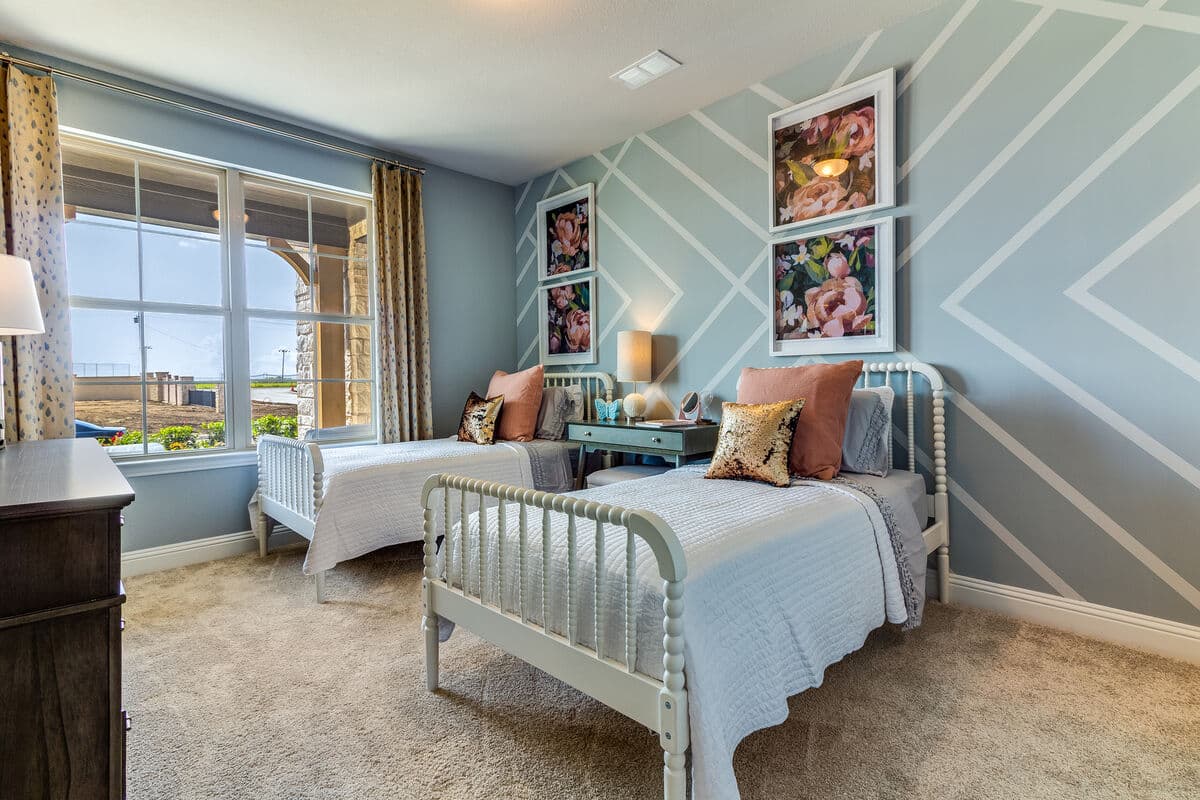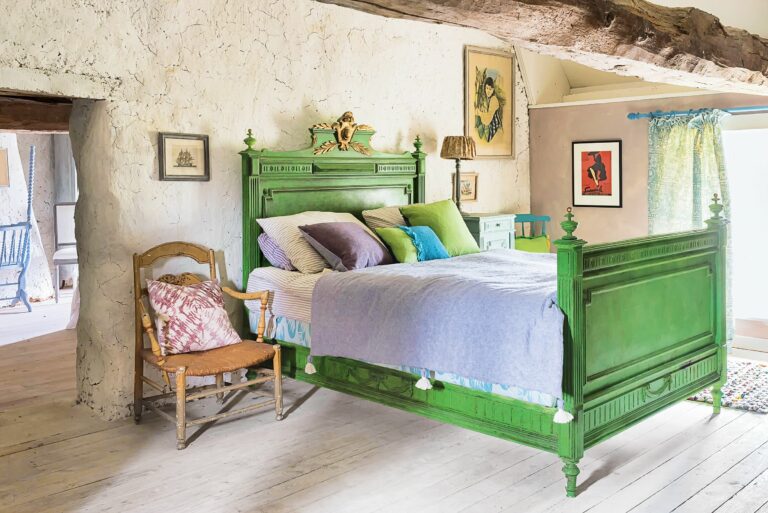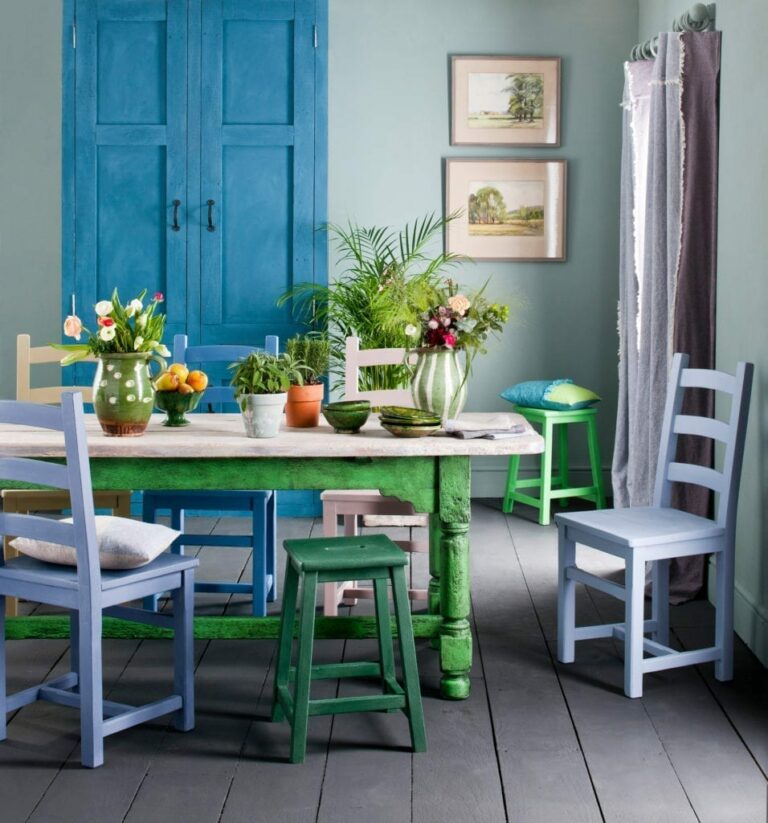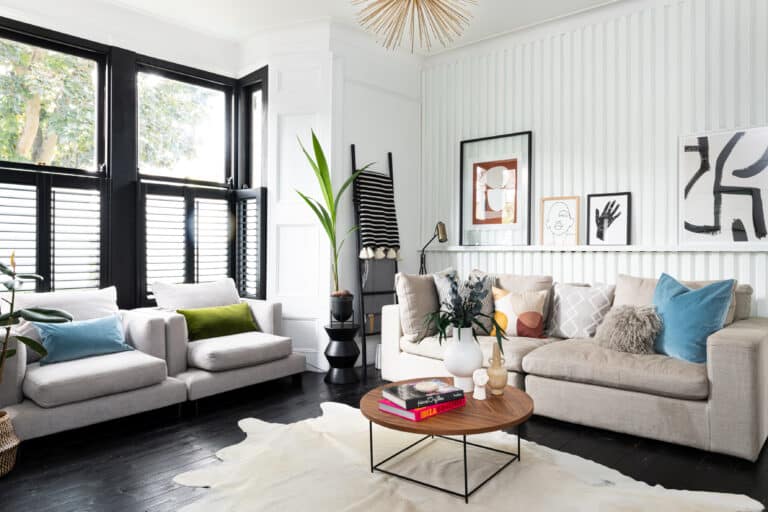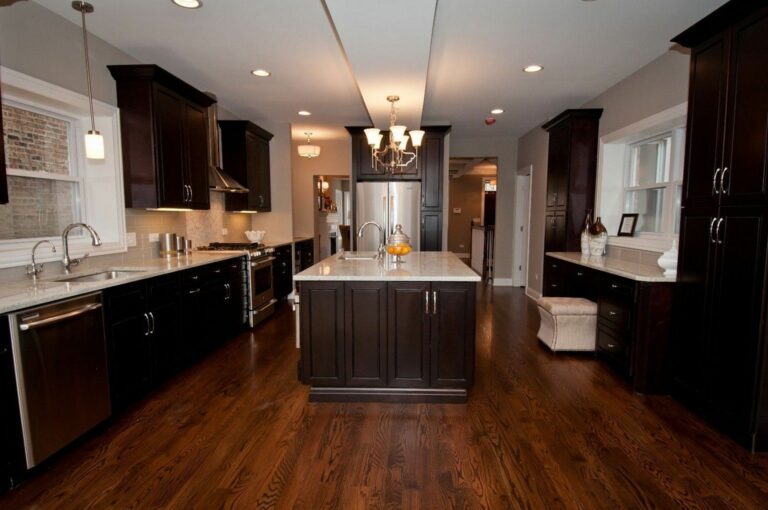Easy DIY Guide for a Geometric Painted Accent Wall
Have you been looking to paint an accent wall in your home but are confused about how to do it? Well, we have got you covered. This article will guide you on how to paint your accent wall from scratch. You will also explore some handy tips along the way.
An accent wall may be just what your home needs to add a bit more personality to it. Besides that, a painted accent wall is a fun and creatively satisfying DIY project to undertake. Painting an accent wall on your own adds a personal touch to your home. It’s something of yours you can tell stories about. We would suggest you make painting an accent wall a family activity.
Just make up your mind about it, and we will guide you through the rest.
Essential Supplies to Paint Your Accent Wall
Now let’s discover the easy way to paint the Geometric accent wall by following these steps.
Step 1. Clean Your Wall
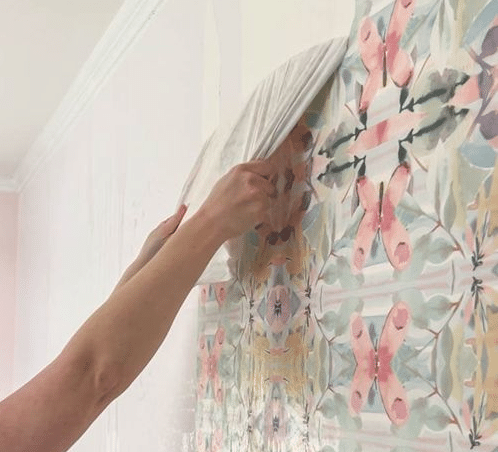
For a painted accent wall, start with cleaning. If your wall has wallpaper, remove it cleanly, this is one of the more frustrating tasks. To do it properly, steam the wall and then remove the wallpaper using a putty knife.
Now you have a bare wall. Clean your wall with water and a sponge to get rid of all the grime, dirt, and any other residue that might be on it. This is an important step. You don’t want to paint over a dirty wall, as it will give a bad texture and uneven finish.
Step 2. Prep and Prime

Your walls likely have some holes from nails or some other wear a tear. Cover those with spackle and allow it to dry. Once they are dry, sand the wall for an even texture.
Now is the time for priming. People often skip this step thinking it to be of less importance. However, priming your wall is necessary, or you will get a dodgy finish. The holes you covered with spackle might absorb more paint than the rest, and the final result will be patchy. So do not skip priming your wall.
Cover the floors will think plastic sheets, or put drop sheets on the floor, other walls, and furniture to avoid getting paint on them. Trust me. You do not want to have to clean the paint off the walls and furniture later. Huddle up all your furniture to one side and cover it in sheets.
Step 3. Apply Base Coat
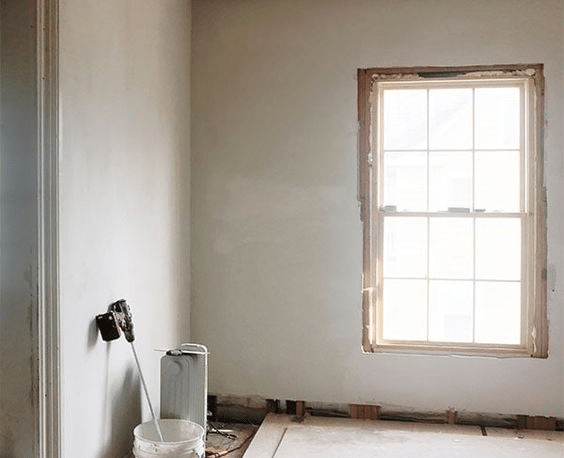
This is a step you can skip if your wall has an even look after being primed. This is the first layer of paint you apply to the wall. It helps to get a nice smooth finish to the top coat. Our suggestion is you go for a nice cool white shade for the base coat of a painted accent wall.
Step 4. Plan and Draw
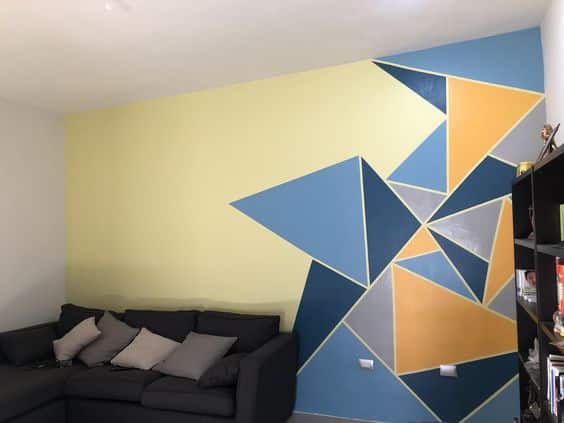
One might think that they can just begin applying the pattern with frog tape, but that might not be as easy. You can be confused and don’t know how to proceed, which means removing the tape again and again. This will end up dirtying the wall again.
To avoid that, sketch the pattern you want on your wall on a sheet of paper or on your computer to visualize it. Once you have an exact idea of the design you want, you may proceed to the next step. If you have never painted an accent wall before, we would suggest you do not use an overcomplicated design.
Tip; If you are going for a geometrical design with equal-sized shapes for your painted accent wall, measuring your wall and dividing it equally in your chosen shapes will be essential.
Step 5. Choosing the Colors

For your painted accent wall choosing colors can seem like a fun task, and it is, but with the range of colors available, one is likely to get confused and face a kind of choice paralysis. Use the design you made on paper or your laptop or iPad and color the various shapes until you have something you like.
We encourage you to do that before you start on the wall because it will help you avoid color touching.
Mark the shapes on the design which you choose to paint with color A and those with color B. You can choose as many colors as you wish.
Step 6. Tape the Design
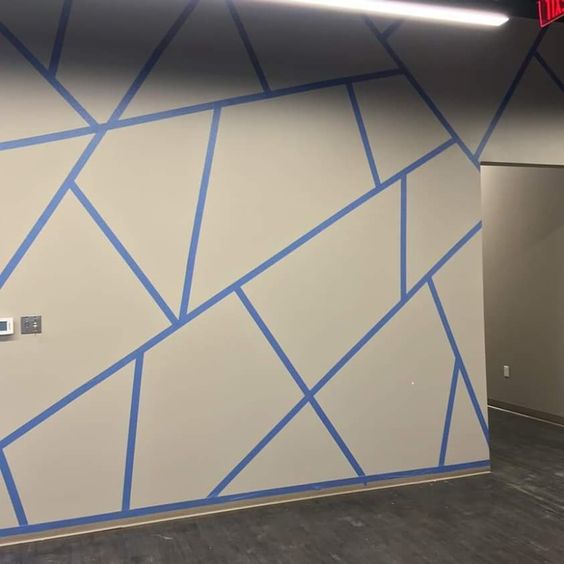
Time to start on your well-primed wall. Take the frog tape or painter’s tape and tape your design on the wall. To make the process easier, you can mark the design with chalk and a ruler on the wall before taping it.
Mark the shapes of the design with small pieces of tape that you want to paint with the first color. Remove them when you’re painting that shape.
Tip; Do avoid any bleed-through. You can secure the edges of the tape with the base color. In that case, if any color bleeds through, it will be the base color and won’t mess up the design of your painted accent wall.
Step 7. Get to Painting
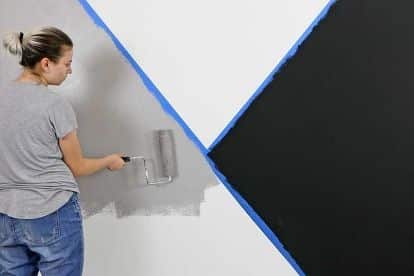
We can finally get to the fun part and start painting. Start painting with the first color; ideally, go from the lighter shade to the darker one. Remember you had already marked the areas to e painted with color A with small pieces of masking or frog tape. Remove the tape from a shape and start painting.
To make sure you get a clean color coat, use a paintbrush first carefully to paint the outline of the shape. Then, use a roller to fill in the color. More times than not, colors will require a double coat. In that case, let the paint dry and then apply the second coat. Once the first color is applied, move toward the next color. If you have chosen more than two colors, repeat the same step by marking the shapes for the second color.
Step 8. Remove the Tape

Remove the frog tape or the painter’s tape. Do not let the paint dry before you remove the tape or some dried paint will come off with it destroying your pattern. Remove the tape while the paint is still wet to get a nice clean look.
Your geometrical painted accent wall is ready. Let the wall dry off properly, and protect it from dust or accidental hand impressions(those are annoying).
Remove the plastic sheeting from the floor and clean the room spotless. Now leave the wall to dry before you start to decorate it, or use that space.
How to Clean the Walls Properly
Cleaning your walls properly is important before you embark on any painting project. Here are some tips for it
- To remove grease stains from the wall, use a mixture of ⅔ cup of water and ⅓ cup of white vinegar. Dip your cloth or sponge in it, and that should do the job.
- For the notorious marks made from a permanent marker using a cloth or cotton ball, dip it in alcohol and rub the marks properly with it.
- Any dirt buildup is easily cleaned with water and a sponge. However, if the buildup is too much, you can use Mr. Clean Eraser to get rid of it.
- If you have kids, I’m sure your walls have some wall art by them. To remove those crayon markings, you can use toothpaste. It should take care of them. If not, try some baking soda, dip a sponge in it, and try rubbing the marks off.
How to Get Rid of Paint Fumes
Painting your walls is fun, but the fumes afterward are certainly not. They can give one a headache. There are a few ways to get rid of them:
- Activated Charcoal- Activated charcoal will absorb these fumes and leave your room free from that chemical odor.
- Baking Soda; a bowl of baking soda in the center of the room will take care of the paint fumes.
- Coffee Beans; Not only do they help with absorbing the paint fumes, but coffee beans also give that warm coffee aroma to the room that smells delicious.
Safety Practices While Painting
You must not disregard safety when doing a DIY painting job at your home. Here are some safety tips you must follow.
- Ideally, when painting, you must keep the room well-ventilated. You must wear a mask even in a well-ventilated room.
- If the room doesn’t have good ventilation, wear a respirator. Respirators are a must, even in a well-ventilated room if you are spray painting your wall.
- Give at least two days for the paint to dry before you start leaving the freshly painted room. This caution should be especially exercised with children and pets.
- Remember to watch out for electrical outlets while painting. You do not want to risk any accidents.
- Do not sand or scrape Lead-based paint off the walls. Today paints don’t use Lead in their composition, but that was not the case before; if you live in an old house built before 1978, it is likely that the paint used on the wall was Lead-based. Sanding Lead-based paint can create lead dust, which, even in small amounts, can be poisonous.
- Solvent Based Paints and thinners are flammable substances. Do not keep them near a heat source like a fireplace or a heater. Do not smoke indoors, or it can lead to a serious fire hazard. Store these paints carefully in safe places. Keep a working fire extinguisher at hand, just in case.
- Use protective gear, like gloves, masks, and protective eyeglasses, while painting.
- With all this, you are good to go!
Conclusion
Painting a geometrical accent wall is a fun task. A painted accent wall will be the center of attention in your space. It can uplift the décor and introduce an artistic touch to your home. For a DIY-painted accent wall, there are a few things you need to keep in mind.
Firstly, it is important to clean your wall properly before painting, or you will not get a good finish. Then, we recommend you visualize the design and the colors first on a piece of paper or your laptop before beginning on the wall. Last but not least is the matter of safety while and after painting. Do not neglect the safety measures, and have a fun and safe experience painting your accent wall.
Now that you know all about painting a geometrical accent wall, let’s get painting!

